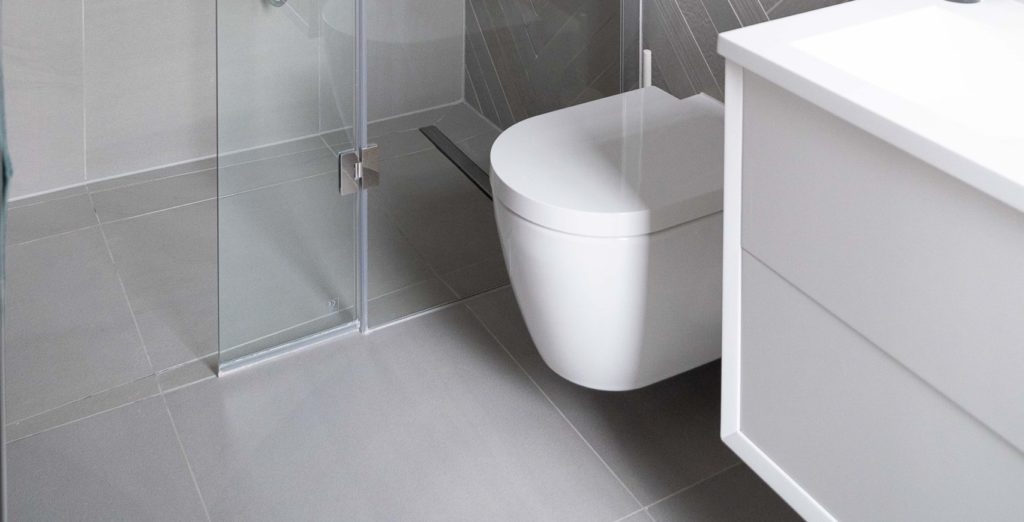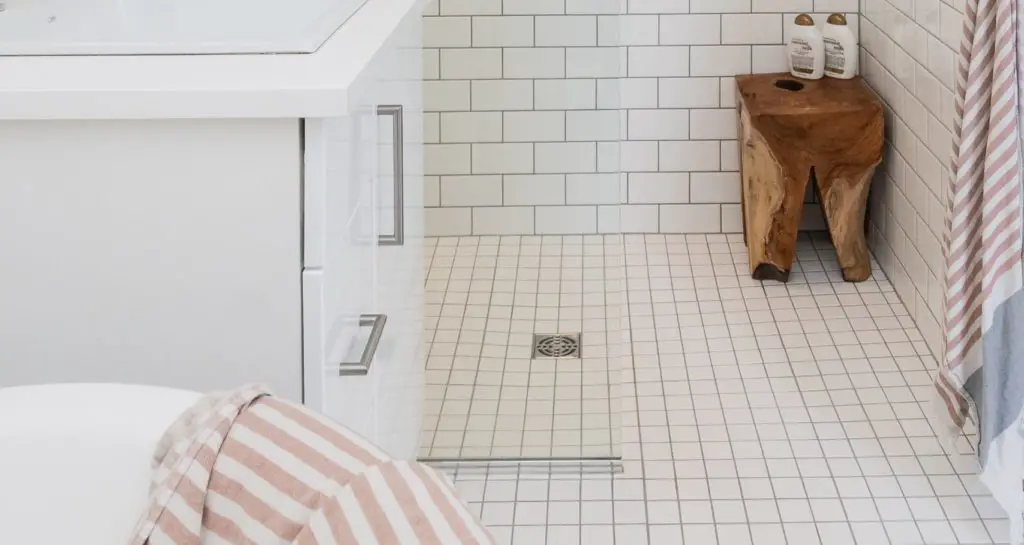How to Install Shower Drain in Concrete Floor
**Articles may contain links that I earn compensation for if clicked and you make a purchase. As an Amazon Associate, I earn from qualifying purchases. These earnings do not actually impact the price of the product or service.
Whether you’re renovating an existing basement bathroom or constructing a new one, a shower drain installation is a DIY-friendly task you can handle yourself. In this article, we’ve included a step-by-step guide on how to install a drain in a shower bay. But before you get into the DIY spirit, let’s identify the tools you’ll require depending on your settings.
Table of Contents
The Required Tools
Any successful process starts with picking the right tools. Whether you’re replacing an existing drain or you’re installing a new one, here are the materials you should get:
- Safety kit (dust mask, goggles)
- Hammer
- Chisel
- Wrench
- Concrete mix (cement and sharp sand)
- Duct tape
- Trowel
- Spray bottle
- Drain assembly (including a drain basket, a no caulk shower drain, or any other type)

How to Install a Shower Drain on Concrete Floor
Now that you have the right tools, here’s how to install a new drain assembly (without having to continue to Youtube).
Step 1: Safety First
Every construction activity is prone to accidents. Thus, before handling the tools, wear your safety kit – mainly the dust mask and goggles. You need both to protect yourself from dust and particles flying in your face.
Step 2: Check the Existing Drain Pipe on the Slab Floor
Ideally, there will be an existing 2-inch drain pipe like a tub drain shooting out from the concrete floor. However, check if it is at the position where you’re installing the new shower drain. If it is not, break the concrete floor with a chisel and hammer.
Afterward, pack the rubble and run a new drain line and a p-trap based on general location.
Suppose the existing drain pipe is at the correct location. Then, confirm that the pipe shoots out by at least an inch. In case the upward extension of the pipe is less than that, you need to break the floor and extend the pipe.
Whether you are running a new drain line on the concrete floor or extending the existing pipe, be careful not to break existing pipes. Also, avoid chiseling beyond what you need for the new installation.
After completing the installation, you will have to mend any breakages. You can check the manufacturer’s installation guide, including details about managing the space you need to install the drain’s basket assembly.
Step 3: Remove the Existing Drain Assembly (If Any)
If you are replacing an old shower drain, disassemble the existing components. First off, use a wrench to remove the bolts holding the drain into the floor.
If you are not sure what type of bolt was used, you may need a complete wrench set for that task. After unscrewing the bolts, remove the top component of the shower drain.
Usually, the drain basket flange is tightened firmly. So, you may need to use a screwdriver to detach it from the pipe cement.
Insert the screwdriver into the bolt holes and carefully start turning in either direction. Once the pipe cement bond is broken, remove the screwdriver and keep turning with your hands till it comes out of the stack.
Step 4: Prepare the Stack and the New Drain to Install in the Shower Pan
Whether you removed the old drain or made a new drain line, you’ll have to prepare both the stack and the new shower drain. So, dry clean the internal part of the stack and the outside surface of the new drain with an old cloth.

Step 5: Prime the Stack and the New Drain
After cleaning both the drain and stack, prime the surfaces you cleaned. Leave both till the primer dries properly.
Since the primer on the drain is outside, it is not hard to see when it is fully dry. However, you may want to gently touch the inside of the stack for such confirmation.
Step 6: Apply Pipe Cement
After confirming that the stack and the drain are dry, apply quality pipe cement on the primed surfaces.
Next, insert the drain into the stack and leave the connection till the cement sets completely. You can refer to the manufacturer’s instructions for how long this should be. But remember that you are only adding cement to the primed surface.
Suppose you discovered that some areas were not primed properly. Repeat the priming and allow it to dry before applying the pipe cement.
Step 7: Fix the New Drain Cover to the Shower Base
After the cement has dried and both components are firmly attached to the shower bay, install the perforated drain cover. As we described earlier, remove the bolts on the flange.
After that, insert the new drain cover over the bolts. Once the cover is in position, keep turning clockwise until it is firmly attached to the flange already on the shower bay. Alternatively, you can use the slotted bar tool based on past activity.
Step 8: Tighten the Bolts
After locking the drain cover in position, tighten the bolts on the flange. While turning with a wrench, be careful not to go too hard so you don’t damage the drain assembly. Take extra care if you are installing a fiberglass shower stall with a special drain assembly.
Step 9: Prepare the Broken Concrete Slab for Repair
Having completed the new shower drain installation, you need to repair the broken concrete slab. However, there are a few preparations to make beforehand.
First off, cover the new drain with duct tape. Then, pour water into a spray bottle and spray on the demolished surface. That will protect you from dust particles.
Apart from that, it will also help the new concrete mix to bond better with the existing concrete floor.

Step 10: Prepare Concrete Mix and Fill Into the Drain Hole
Make a concrete mix of cement and sharp sand in a ratio of 1:3 using a trowel. Except if you’ve made a new drain line under the concrete floor, you’ll only need a few chunky mixtures to fill the holes.
Pour some concrete around the drain and cover the flange. Also, fill any other damaged surfaces. After filling every hole, smooth-finish the surface and leave the new concrete to dry.
Finally, detach the duct tape from the drain cover.
Conclusion
That’s all you need to install a new shower drain. Ensure you adhere strictly to our safety recommendations and use the right tools. If you are installing a fiberglass shower stall with a special drain assembly, refer to the manufacturer’s guide for other specifics.
![Wall Mounted Shower Seat [Top 10 List]: Ultimate Buyer and User Guide 7 Wall Mounted Shower Seat Top 10 List Ultimate Buyer and User Guide](https://thehomeguide.net/wp-content/uploads/2020/06/Wall-Mounted-Shower-Seat-Top-10-List-Ultimate-Buyer-and-User-Guide-390x205.jpg)

